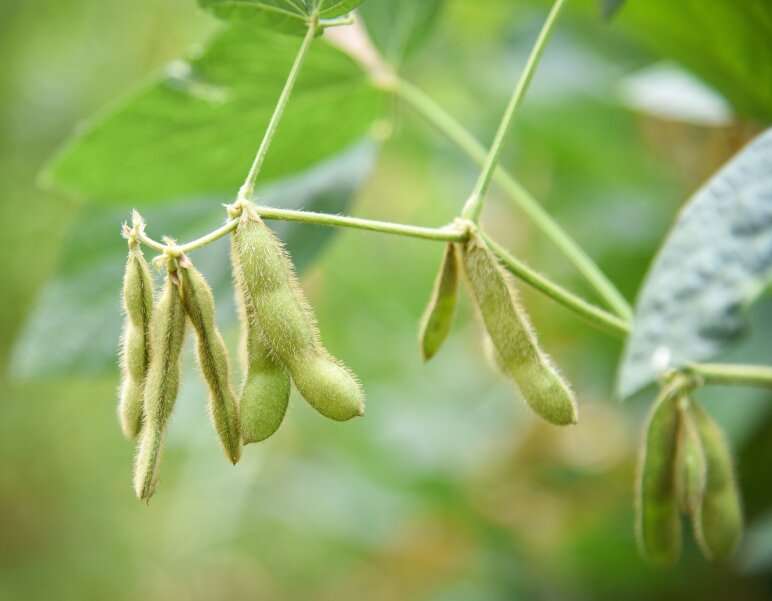This article has been reviewed according to Science X's editorial process and policies. Editors have highlighted the following attributes while ensuring the content's credibility:
fact-checked
trusted source
proofread
Unveiling the secrets of green pods: The role of soybean pods and seeds in photosynthesis

Picture this: You're enjoying a bowl of green edamame, savoring the delicious flavor. But have you ever stopped to wonder why these pods are green? After all, we often associate chlorophyll, the pigment responsible for their color, with photosynthesis in leaves. Well, hold on to your edamame because research conducted by a team from the University of Illinois has revealed a surprising answer. It turns out that chlorophyll in soybean pods plays a vital role in the plant's photosynthetic process and significantly contribute to soybean yield.
Many people study photosynthesis in plant leaves, but since the pods and immature seeds (edamame) of soybean plants are also green, they are receiving chlorophyll and should be studied as well.
"My project was originally focused on optimizing photosynthetic efficiency by reducing leaf chlorophyll levels, which exceed the leaves' production capacity," said Young Cho, lead author and postdoctoral researcher for the Realizing Increased Photosynthetic Efficiency (RIPE) Project. "I noticed the green soybean pods and wondered about their role, but we had doubts about the extent of the pods' contribution given their location below the top canopy."
Unlike soybean pods, barley kernels and wheat grain are at the very top of their respective plants, so previous studies showing they have a significant effect on yield were unsurprising. What Cho and the Ort Lab team found, and recently published in Plant Physiology, was that pod and seed photosynthesis account for a remarkable 13 percent of the final seed weight (yield) and nine percent of the overall photosynthesis occurring in the soybean's canopy.
"Pods and seeds contributing to the process of photosynthesis, even under the canopy in current agricultural conditions, is a substantial finding," said Cho. "This research opens new avenues for understanding the significance of soybean pods in photosynthetic processes by challenging conventional notions and offering new insight into optimizing plant productivity."
This work is part of Realizing Increased Photosynthetic Efficiency (RIPE), an international research project that aims to increase global food production by developing food crops that turn the sun's energy into food more efficiently.
The team's next step for the work involves examining the extent to which the soybean pods absorb carbon dioxide (CO2) and release oxygen, particularly in comparison to the plant's leaves.
More information: Young B Cho et al, Impact of pod and seed photosynthesis on seed filling and canopy carbon gain in soybean, Plant Physiology (2023). DOI: 10.1093/plphys/kiad324
Provided by University of Illinois at Urbana-Champaign





















